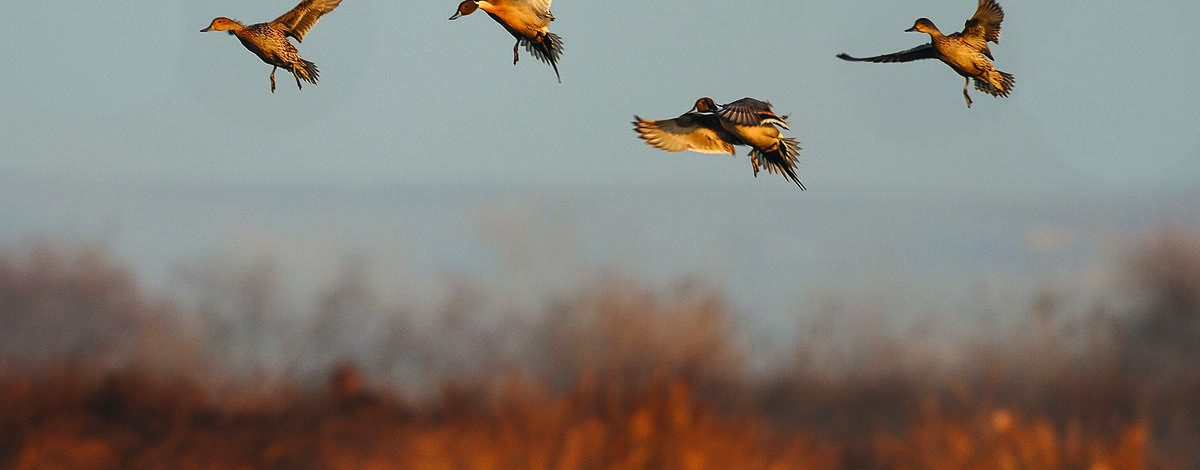Capturing and banding ducks and geese is one of the older methods for monitoring waterfowl. It is vital to understanding where birds move, how long they live, species, age and sex ratios, and how changes in long-term trends can alert biologists to problems in their nesting, rearing and migration habitats.
Each year wildlife biologists and habitat managers across Idaho band waterfowl in support of the Pacific Flyway international research on bird migration. On McArthur Lake Wildlife Management Area in North Idaho, a duck banding crew shows how it works.
What Happens Next?
Once the bands go on and the bird flies away to parts unknown, how do researchers know that bird’s fate? This is where hunters come in.
When hunters harvest ducks and geese during the fall and winter months, they may end up with a banded bird, sporting numbered aluminum and colored plastic bands. The colored bands usually indicate that a specific research project has captured the bird previously.
Because so many hunters take a few minutes to report a band, they have become a valuable source of information from all around the continent. This one act helps researchers understand how these birds move on the landscape and how connected and important each habitat they visit is to their continued existence.
If you are fortunate enough to harvest a banded duck, go to www.reportband.gov and you can become part of the circle of research and information that is key to insuring healthy populations of waterfowl for the future.
For hunters headed to wildlife management areas in the Panhandle Region take a look at recent observations on the Boundary-Smith Creek WMA and McArthur Lake WMA.

